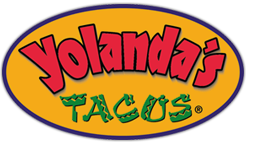The menu items, promotional tools, and business strategies that will affect quick serves this year.
Whether analyzing politics, the silver screen, or stock markets, experts try to offer a peek at the trends we can expect in the coming year. The restaurant industry is no different. Throughout 2012’s fourth quarter, various consultants, chefs, and operators gazed into their crystal balls and forecasted the hot restaurant ideas and issues of 2013.
The following 8 trends, according to those experts, seem most likely to impact quick-service and fast-casual restaurants this year.
1. Going Local
Despite disagreement about what local really means, there is little doubt that consumers increasingly see it as a positive attribute. Locally grown or sourced ingredients fill three of the 10 spots in the National Restaurant Association’s (NRA) annual “What’s Hot” culinary forecast, a survey of more than 1,800 professional chefs who are members of the American Culinary Federation.
2. Healthy kids’ meals
Healthful and creative kids’ meals will continue to make an impression on the quick-service industry.
Operators are now going to great lengths to improve the nutritional profile of kids’ meals. Restaurants can improve the health quality of kids’ meals by taking steps like grilling instead of frying, cutting calories and fat. These efforts aren’t just satisfying parents; kids are also becoming more comfortable with healthier foods.
3. Snacks as a meal
A wide range of influences—around-the-clock eating, customer demand for flexible portions and prices, the food-truck and street-food craze, and operators’ need to move beyond price cutting on core menu items, to name a few—will keep snacking a hot trend this year.
4. More fruits and veggies
Quick-service restaurants have never been short on vegetable and fruit offerings—potatoes for french fries; tomatoes, lettuce, and onions on burgers; and various items in salads—but customers will expect more fruit and vegetable variety on menus, the experts say. Avocado is also solidifying its role as a sexy ingredient in restaurant sandwiches, wraps, and salads.
5. Gluten-free options
Gluten is found in processed wheat, rye, barley, and related grains, and causes a serious reaction, called celiac disease, in less than 1 percent of Americans. These people eschew wheat-based items like pasta, bread, cookies, cakes, sauces, and beer.
Some experts have estimated that another 10 percent have gluten sensitivity, which can result in muscle aches, serious acne, gastrointestinal woes, and other problems. Many more simply believe there is a derived health benefit.
6. Trickle-up trends
At one time, food trends started at fine-dining and casual restaurants and eventually wound up at limited service.
Not so much anymore. Quick service, and particularly fast casual, is reversing the trend.
“Fast casual will be the way of the world this year,” says Andrew Freeman, founder of Andrew Freeman & Co., a San Francisco–based hospitality-consulting agency. Limited-service brands will be leaders in new menu items, as well as in service, he says.
Chefs trained in fine dining increasingly realize this fact and continue to develop fast-casual restaurants with concise menus focusing on one narrowly defined concept, such as burgers, barbecue, or roast chicken.
7. Ethnic foods
All kinds of ethnic foods have found their way to limited service, and that should continue to expand this year. There will always be a role for traditional Mexican cooking, but a growing number of restaurants will be focusing on the sophisticated, authentic side of Mexican cuisine, as well as of South American food. Freeman calls this Nex Mex. “Finding the real thing is really important,” he says. Several foreign quick-service chains have indicated they expect to add more units in the U.S. this year, including Giraffas (Brazil), Pollo Campero (Guatemala), and Asiana Grill Yoshinoya (from Japan’s Yoshinoya).
8. Innovative beverages
Looking for differentiation? The trend is toward fresh fruit beverages, natural energy drinks, and various local offerings, such as house-made sodas, micro-distillery liquors, and regional craft beer.
